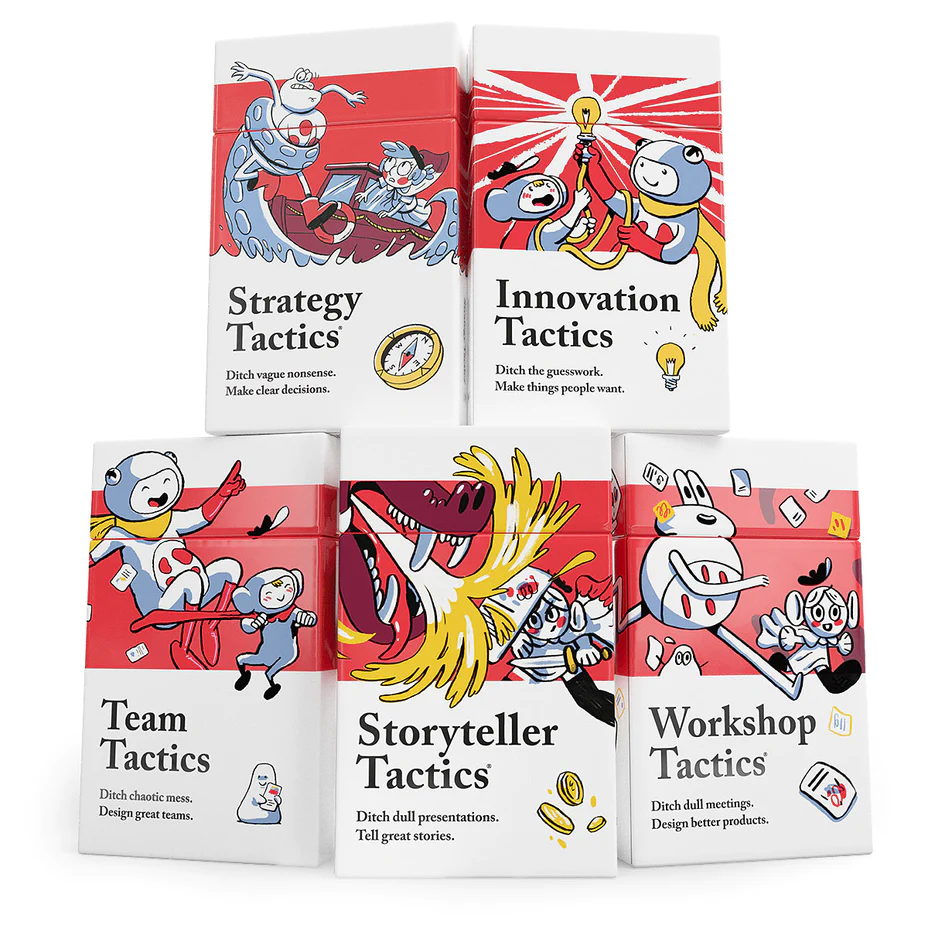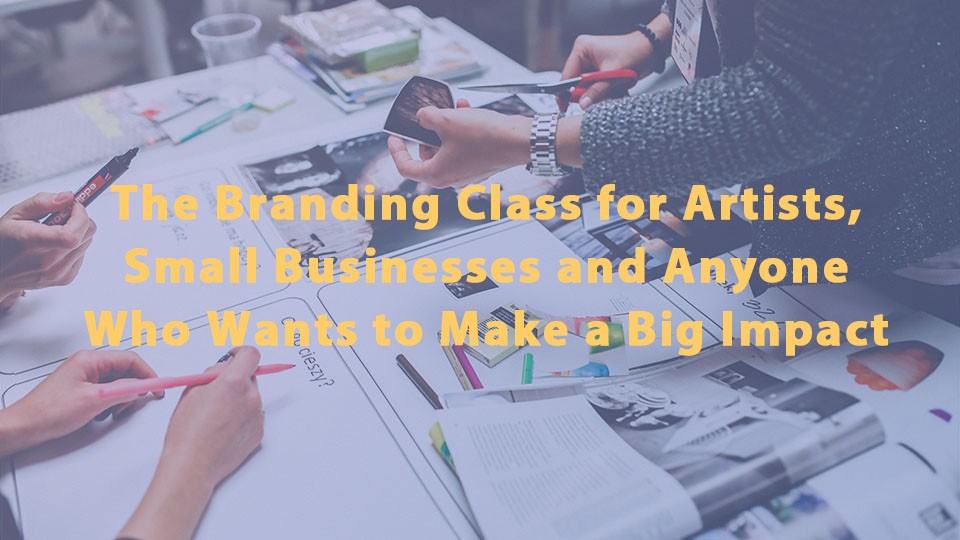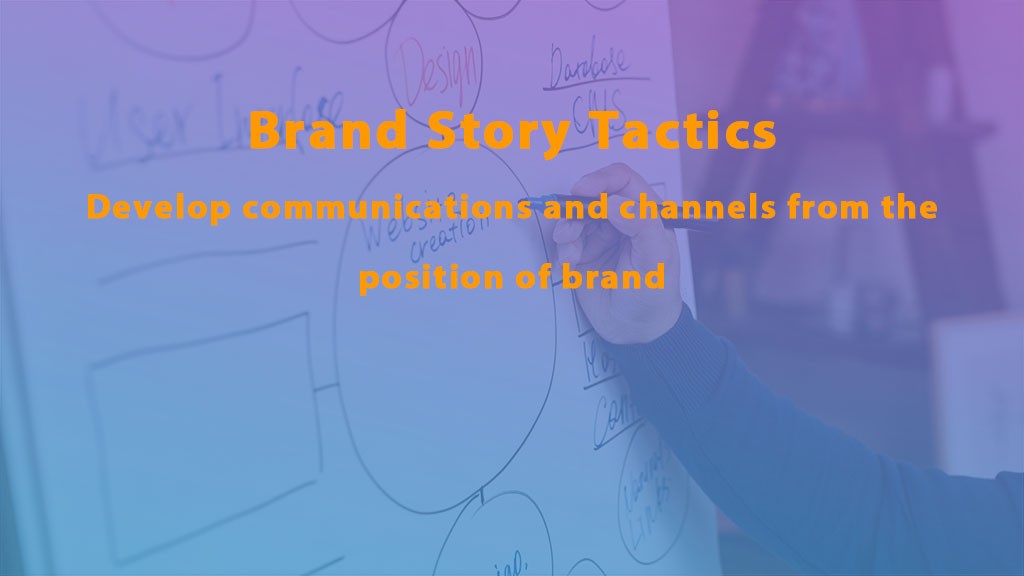From Brand Story to Brand Multiverse
Make the shift and open up a multiverse of story opportunities.
The Rise of Brand Story
In the 1990’s, when companies realized that their brand was a predominant source of purchase decisions and loyalty, many long standing companies went back into their history to figure out what their core brand essence could be.
Many of the largest corporations had a history of mergers and acquisitions. Their growth had been built from claiming territory and expanding their dominance from one market to the next. In addition, many of these companies had shifted from US based manufacturing to international production and distribution, or, in some cases, away from physical products to services, or even to licensable intellectual property. To find the root, companies had to look into their past and reflect on their present to see their history through the lens of the thoughts, attitudes and beliefs their customers might have had about the company at various points in their history.
See the Adidas Brand Story in Action
Sports giant Adidas is named after its founder Adi Dassler. Like many international corporations, Adidas wants to represent its humble origins – his mother’s washroom where Adi built his first shoes for sport that were soon registered, along with the three iconic stripes that are associated with the brand today. They do that and more quite effectively on their company history webpage.
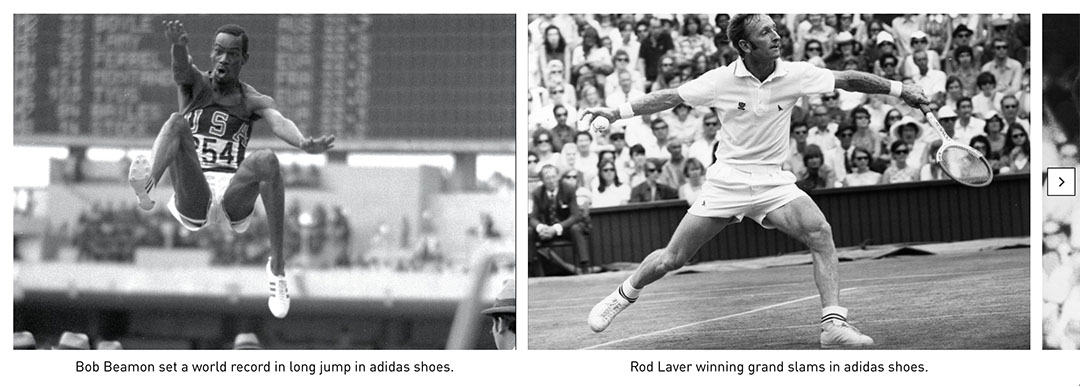

Case Analysis
In a case I evaluated as part of my MBA, a company that creates semiconductors, computer chips, and delivers electrical utilities to major cities today actually started out manufacturing ceiling fans. In assessing the brand, the brand strategist has to cast out pages and pages of information about US vs overseas production, the formation of a corporation from a family business, adoption of engineering as a core competence, and look at the points where creativity and innovation predominated. Within the information a story emerged – changes to production processes, new approaches to forming parts, switches and more. At each stage, the company figured out ways to provide customers more choice and a better experience. Electricity was involved from start to finish, and the shifts and turns in the company story, which at first seemed wild, came into coherence.
Across industries, as corporations worked to understand their core competencies and to describe their histories from the perspective of brand, the linear brand story became de rigueur.
As you scroll down the history page on the Adidas website, you’ll see key moments in the company’s history. Elements include the company timeline, as well as pivots – moments the company changed leadership, changed direction, or added assets. In 1954 the German football (soccer) team beat Hungary, then a seemingly insurmountable feat. The team was wearing Adidas lightweight shoes with screw in cleats. The affiliation of the shoes and the win were solidified in the minds of a generation of football fans.
The company expanded to become a true multi-sport expert by the 1970’s and became a name in fashion in the 1980’s when Run DMC adopted the brand as their signature style. Both founding Dasslers passed away by the late 80’s, and the company struggled under a “sales” mindset. The new CEO brought a “marketing” mindset which tipped the company’s fortunes to the positive once again.
You get the idea. New corporate headquarters, new CEOs or presidents, new brand acquisitions, new sports, new approaches to learning and understanding athletes – the story is one of growth that does not deny the challenges the organization has had to overcome to remain in the minds of their customers. Reading the whole timeline provides a sense of continuity and provides insight into the learning that has led the growth, both in terms of sales and customer loyalty, up to the present day.
How can this linear story become a brand universe? Before we talk about brand universe, let’s look at a simple way to create your historical brand story using Storyteller Tactics to structure and influence your choice of content for the story.
Create your Brand Story
Using Storyteller Tactics, you can build your historical brand story using a card called “The Five Ts.” This story recipe hits the key components: historical timeline, turning points, moments that create tension – like the period after the Dassler brothers passed away, but before they shifted from a “sales” approach to a “marketing” mindset. Temptations – this could be brand extensions that didn’t work out, directions that were considered but mindfully declined, and lastly, Teachable Moments – what did your brand learn along the way?
By using this kind of structure, you can highlight the moments that turn your story from a litany of profit and loss bullet points, to a narrative about an organization built by people, executed through struggle, and resulting in outcomes and insights that truly benefit the customer or benefactor of that work, in this case, athletes, artists, style mavens and more.
Like Adidas, you can think about your organization in terms of direction, leadership and assets. What changed? What remained as the core of the brand?

Additional Storyteller Tactics Cards Support Your Brand Story
What can really empower this kind of brand story when using Storyteller Tactics is, after discovering the key story moments, bringing in one card for each turning point:
Drive stories – what motivated the founders at the beginning?
Innovation Curve – what is the journey in terms of how your evolution adapted from new ideas to accepted ideas?
Hero and Guide – frame your story in terms of your customer.
there are 42 story recipes in the deck, and each one can have an impact when you use it to create meaningful messages and content for your audience. These cards can have a never-ending impact on your brand communications when you apply them in the context of a Brand Universe. Let’s take a look…
Understanding Brand Universe and Multiverse
Your company, nonprofit, small business, or social cause can go beyond a linear brand story.
While a brand story is most often a linear narrative that positions the company’s history in relation to who the brand is today and where it is going, a brand universe infuses the essence of the brand into every touchpoint the company creates.
Consider the universes created by DC and Marvel comics. Each company has a lineup of characters and character back-stories originally written in the 1950’s. What comic book companies quickly realized is that audiences have enough appetite for these characters and stories they are willing to read or watch not only one “what if” story, but many. DC actually transcended the universes of characters and worlds they had created, transitioning from a story universe to a story multiverse.
What if Superman entered a world where everything was reversed? What if the Harley Quinn isn’t as crazy as she’s made out to be?
Marvel expands from a universe to a multiverse when it asks, “what if Wanda Maximoff loved Vision so much she’d create a magical city where he could come back to life?” In a multiverse we can have an unlimited number of stories where Vision is dead, where Vision is alive, and where Vision lives, stuck between the two, held in the real world only by love and magic. The only boundary to multiverse storytelling is our imagination.
These are the kinds of questions writers in a strong brand universe can ask. This applies to more modern character universes like Star Wars and Star Trek, but it also apples to brands in the real world. What if Nike wasn’t just running and golf, but also was skateboarding, and was also yoga and wellness?
See a Brand Universe In Action
Nike’s “about” website has evolved since the mid 2000’s. The company’s mission and vision are the first things you see, then, instead of a linear history, the site moves into contemporary stories that express what the company is about and what they are doing today. In 2014, that was about corporate responsibility and the team.
Today, that’s about empowering women and expanding the concept of sport. In September 2023, the first story is “Stories, Volume 3: All Movement, All Movements.” The article starts with the statement:
“Fifty years of listening to athletes, alongside our culture of innovation, has lead us to product and services that are increasingly inclusive and consider body, mind and life.”
Both mindfulness and rest are featured as important forms of movement, and there is a video short on “products for your period” and another on the innovation of soccer (football) shoes for women. A photo shoot with female dancers and athletes concludes the page, expressing the power and diversity of women’s movement.
Because Nike’s About page is dynamic, the company can evolve its story and keep its history.
The company encompasses multiple brands: Jordan, Converse, and Nike. Originally, Jordan was treated as a Nike product line, but the line evolved and exists independently, but closely related to Nike. The result is a company with multiple brands in many sports serving a myriad of practitioners through style and function to play, compete, and express themselves.
We are going to look at how to create a brand universe in a moment, but let’s first look at how linear brand stories and expansive brand universes can work hand-in hand.
A Brand Story/Brand Universe Combination in Action
Today, Unilever’s “Our Story” page starts with an image of some of the most popular brands it owns: Ben & Jerry’s, Dove, Persil, and Lynx, followed by a statement about innovation, corporate responsibility and recycling. Because Unilever is a holding company that has decided to express itself as a brand, not just a financial and managerial group, it already exists as a brand universe. Each brand in its portfolio carries a story, and Unilever does the work to stitch those stories into a unified whole.
Following its hero image showcasing a variety of brands, the web page heads into short brand profiles, demonstrating that the company’s roots are in the mass production of soaps, foods, and agriculture, dating back to the 1880’s, a company history truly rooted in the industrial revolution.
At Unilever, a key message the company wants to convey is responsibility – to customers, to the environment, to workers, and in general, to the world. Their story addresses launch dates for the brands they own and manage, but also highlights a moment in time when innovation in the brand shifted toward the creation of a better world, not just a better product.
Create your Brand Universe or Multiverse
A key activity in finding and discovering the rich brand stories is developing a story bank and a process for developing and capturing stories as your business grows and changes. People want to see what you are about. Learn more about developing a story bank with our Story Bank Recipe.
Individual stories are great, but what about the big picture of brand universe development? The story bank process draws out existing stories from customers, employees, and teams. Building a brand universe is a constructive activity rather than simply capturing and framing existing stories. It’s about imagining possibilities and evaluating which of those possibilities can work in relation to your audience and where you are going.
It’s like imagining Superman as an ordinary person in a world where everyone else has superpowers. Does your job ever feel like that? Mine does! How can we mere mortals stand out when everyone else, when every other brand, seems like they sailing smoothly along while we are stuck in our little rowboat navigating the stormy seas? There can be real humility in telling those small stories of struggle. Every small or mid-sized business has to bail water with a teacup at some point to stay afloat. You can gain credibility by recounting the lessons learned as you work toward stability.
This is but one potential brand story in a myriad of brand stories that can be explored within a multiverse framework.
After imagining our brand through a down-to-earth story lens, we have to move on and find another way of exploring who we are. What if our story is really one of discovery? Discovering materials, combinations, customer wants and needs. What if we are continually collecting data and information and puzzling things together to create new outcomes, then fitting those discoveries in -finding what makes sense? What if we do ‘discovery’ better than everyone else? What if that’s our superpower, and we aren’t actually the brand with only ordinary human capacities? What if our daily struggle isn’t a struggle at all, but the work we chose to serve our audience better, more thoughtfully, even though we are small. Can we then walk among giants or fly among heroes?
The real challenge in building a brand multiverse is to continually re-imagine who we are and what we do through the many possibilities that can be imagined. In the two potential universes above, the former gives us real opportunities to be down to earth. The latter allows us to rise above the fray.
The whole point of building a brand universe or multiverse is to recognize the reality that each element of an organization can be many things at one time.
In the words of Bruce Wayne/Batman talking about why he walked away from playing the hero, “A hero can be anyone, even a man doing something as simple and reassuring as putting a coat on a young boy’s shoulders to let him know that the world hadn’t ended.” In the Batman story universe, Wayne was remembering what Jim Gordon, the officer that helped him after his parents died.
A simple thing can be heroic, and a heroic thing can be down to earth. Both perceptions are real representations of the same thing. These are examples of the same story universe, because they share the same foundational roots. Building a story universe for your brand allows you to see and express your brand in this same, dynamic way, which lends it the elements we associate with humanity. In a brand universe, this can play out through product or brand extensions, alternate uses for existing offers, new markets and each market’s unique features.
To move to a brand multiverse, you can push further to explore what your brand could be if it held a completely different position in a world that does not yet exist… In order to effectively engage through a brand universe or to transcend to a brand multiverse, there are some steps to establish and manage the stories you present.
Each of these come from various processes and recipes for business and story development outlined in Pip Decks cards. In the following section I’ll identify the card name, which deck it comes from, and I’ll provide a description of how the process can be applied to brand building.
Tools to Build Your Brand Universe or Multiverse
By now you’ve probably seen these decks promoted on Instagram, Facebook, and other platforms and wondered if they really help solve team challenges and help teams work better… I earned my MBA in management and strategy, and I’ve been using the full set of Pip Decks tools with my designers and clients to increase buy-in, get better team integration, solve internal process challenges, and to tell better brand stories.
Get the full set AND a 15% discount off your entire purchase using our Affiliate Link.
Idea storm – Workshop Tactics – The goal of idea storming is to get as many possible worlds out, often thinking in a ‘multiverse way’ then to evaluate them for viability within the universe you want to create. The idea storm uses several of the following tactics:
Mind mapping – Workshop Tactics – in the Pip Decks world, two decks, Idea Tactics and Workshop tactics have viable tools for mind mapping. The goal here is to discover as many story premises about your brand as possible. What if your brand were evil instead of good? What if your brand usually presents itself as fun, but you could also present it as scientific or deeply researched? What would happen if a CEO from another company took the rains? How would the priorities and outcomes be different if your headquarters were in a different country and shaped by the local culture? Go as broad as possible.
When you can do your mind mapping on a wall with sticky notes, it gives you the flexibility to move your ideas around to see how they cluster.
Crazy eights – Workshop Tactics, Idea Tactics – the goal of this activity is to take each idea and quickly generate eight variants or extensions of the core concept. It’s a way to continue expanding your possibility map with as many off-the-wall ideas as possible.
T-Bar – Workshop Tactics, Idea Tactics – this format allows you to flesh out each premise with a title, a sketch and a brief description. The result can be a flip-book of story ideas that can be fleshed out over time.
Combinaboards – Idea Tactics – or…
CSI Pinboard – Strategy Tactics – The idea here is to begin to cluster divergent ideas into related groups.
What would x do? – Idea tactics – This is an opportunity to enter your favorite real or imagined character into a particular role and to imagine the future they would create.
Want to learn more about Story development?
Take my online brand building class, get the Storyteller Tactics deck, or begin with one-on-one coaching to shape your next project.
Take the Course!
The Branding Class for Artists, Small Businesses, and Anyone Who Wants to Make a Big Impact teaches the foundational framework of branding. Develop your brand platform, then connect it to your messaging. By the end of the course you’ll have actionable tools you will use each time you create content and messaging.
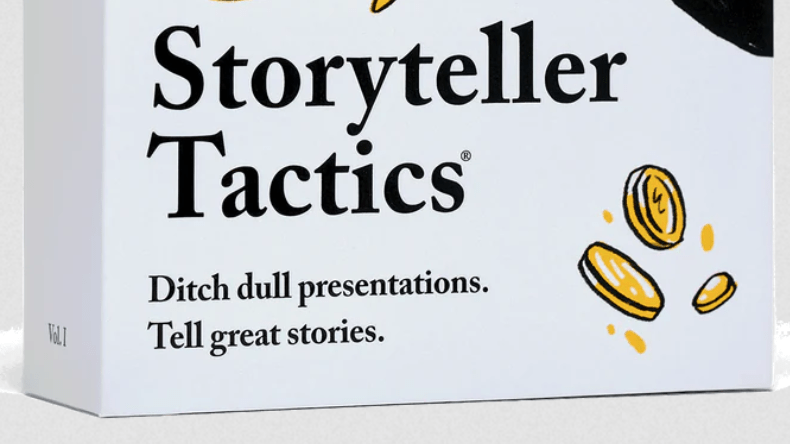
Get Storyteller Tactics
The Storyteller Tactics Deck includes 54 recipes that will immediately impact your storytelling. From pitch decks to ads, blogs, webinars, trainings, coaching, and more, these tools help you connect with your audience so they will remember, the “say, think and do” outcomes you are aiming for in your communications.
One-on-One Coaching
Stuck on the development of your communication pillars, key messages, or content? Let’s create a custom coaching plan to get you over the hump. The goal of coaching is to move you from doubt to clarity on your messages and communication tactics that help you build real resonance and relationships with your audience.

